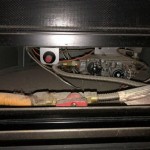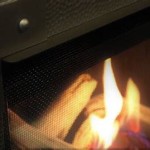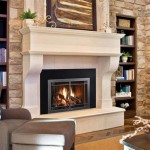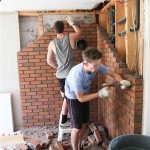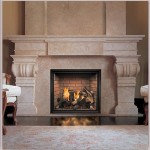Prefab Wood Burning Fireplace Inserts: A Comprehensive Guide
Prefabricated wood burning fireplace inserts offer a convenient and efficient way to transform an existing masonry fireplace into a powerful heating source. These inserts, also known as wood stove inserts, are designed to fit directly into an existing fireplace opening, providing a sealed combustion system that significantly improves heating efficiency and reduces emissions compared to traditional open fireplaces. This article provides a comprehensive overview of prefab wood burning fireplace inserts, covering their benefits, types, selection criteria, installation process, and maintenance requirements.
Understanding the Benefits of Prefab Wood Burning Fireplace Inserts
Traditional masonry fireplaces, while aesthetically pleasing, are notoriously inefficient. A significant portion of the heat generated escapes up the chimney, resulting in minimal warmth and high energy bills. Prefab wood burning fireplace inserts address this issue by creating a closed combustion chamber that traps heat and directs it into the room. This results in a number of key benefits:
Improved Heating Efficiency: A primary advantage of using a prefab wood burning fireplace insert is its increased heating efficiency. Unlike open fireplaces, which can lose up to 90% of their heat, inserts achieve efficiencies ranging from 60% to 80% or even higher, depending on the model and technology. This translates directly into lower heating costs and a warmer home.
Reduced Emissions: Modern prefab wood burning fireplace inserts are designed to burn wood more completely, reducing emissions of particulate matter and other pollutants. Many models meet or exceed EPA (Environmental Protection Agency) emission standards, making them a more environmentally friendly heating option than older, open fireplaces.
Enhanced Safety: Open fireplaces can pose safety risks due to sparks, embers, and creosote buildup. Inserts feature a sealed combustion chamber and a controlled air supply, minimizing the risk of sparks escaping and reducing the formation of creosote in the chimney. They also often include safety features such as glass doors and spark screens.
Zone Heating Capability: Wood burning fireplace inserts excel at zone heating, allowing homeowners to effectively heat a specific area of the house, such as the living room, without needing to heat the entire home. This can be particularly beneficial in situations where only a specific area needs to be warmed, leading to significant energy savings.
Aesthetic Appeal: While primarily functional, most prefab wood burning fireplace inserts offer a visually appealing design. They are available in a variety of styles and finishes, allowing homeowners to choose an insert that complements their existing décor. Many models feature large glass viewing windows that allow users to enjoy the warmth and ambiance of a real wood fire.
Exploring Different Types of Prefab Wood Burning Fireplace Inserts
The market offers a wide range of prefab wood burning fireplace inserts, each with its own set of features and benefits. Understanding the different types can help homeowners make an informed decision based on their specific needs and budget:
Catalytic Inserts: Catalytic inserts use a catalytic combustor to burn off gases and particles that would otherwise escape up the chimney. This results in cleaner burning, higher efficiency, and reduced emissions. Catalytic inserts typically require more maintenance than non-catalytic inserts, as the catalytic combustor needs to be replaced periodically.
Non-Catalytic Inserts: Non-catalytic inserts use a different approach to achieve clean burning. They rely on a precisely engineered firebox design and a secondary air system to burn off gases and particles. Non-catalytic inserts are generally easier to maintain than catalytic inserts, but they may not be quite as efficient or as clean burning.
Hopper-Fed Inserts: Hopper-fed inserts are designed to burn for extended periods without requiring frequent reloading. They feature a large hopper that can hold a significant amount of wood, allowing the insert to burn continuously for several hours or even overnight. These inserts are ideal for homeowners who want a convenient and low-maintenance heating option.
Hybrid Inserts: Hybrid inserts combine features of both catalytic and non-catalytic inserts. They typically use a catalytic combustor for initial startup and then switch to a non-catalytic mode for sustained burning. This allows them to achieve high efficiency and low emissions while also reducing maintenance requirements.
Freestanding vs. Insertable: While this article focusses on inserts, it is important to differentiate them from freestanding wood stoves. Inserts are designed specifically to fit into an existing fireplace opening. Freestanding wood stoves are placed on the floor away from the wall and require proper clearances to combustible materials.
Key Considerations When Selecting a Prefab Wood Burning Fireplace Insert
Choosing the right prefab wood burning fireplace insert involves careful consideration of several factors:
Heating Capacity: Determine the heating capacity required based on the size of the area to be heated. Inserts are typically rated in terms of BTU (British Thermal Units), which indicates the amount of heat they can produce per hour. Selecting an insert with the appropriate BTU rating will ensure that the room is adequately heated without wasting energy.
Firebox Size: Consider the firebox size, which dictates the length of logs that can be accommodated. A larger firebox allows for longer burn times and less frequent reloading. However, it also requires more wood and may not be necessary for smaller spaces.
Efficiency Rating: Check the efficiency rating of the insert. A higher efficiency rating means that more of the wood's energy is converted into heat, resulting in lower fuel consumption and reduced emissions. Look for inserts with an efficiency rating of 70% or higher.
EPA Certification: Ensure that the insert is EPA certified. EPA-certified inserts meet stringent emission standards and are therefore more environmentally friendly than non-certified models. EPA certification also often qualifies the insert for tax credits or rebates.
Size and Dimensions: Accurately measure the dimensions of the fireplace opening to ensure that the insert will fit properly. Consider the width, height, and depth of the opening, as well as the size of the hearth. It is crucial to consult the manufacturer's specifications to determine the minimum and maximum dimensions required for installation.
Material and Construction: Consider the material and construction of the insert. Cast iron inserts are known for their durability and heat retention, while steel inserts are lighter and more affordable. Look for inserts with a robust construction and high-quality materials that will withstand the rigors of regular use.
Features and Options: Evaluate the features and options offered by different inserts. Some inserts include features such as blowers, thermostats, and remote controls. Blowers can help to distribute heat more evenly throughout the room, while thermostats can maintain a consistent temperature. Remote controls allow for easy operation and adjustment of the insert.
Cost: Establish a budget and compare the costs of different inserts. The cost of an insert can vary depending on its size, features, and brand. In addition to the purchase price, consider the cost of installation and any necessary accessories, such as a chimney liner.
Warranty: Check the warranty offered by the manufacturer. A longer warranty provides greater peace of mind and protects against potential defects or malfunctions.
Installing a Prefab Wood Burning Fireplace Insert
Proper installation is critical for ensuring the safe and efficient operation of a prefab wood burning fireplace insert. It is strongly recommended to hire a qualified professional to install the insert. Improper installation can lead to safety hazards, such as carbon monoxide poisoning or chimney fires.
Chimney Inspection and Cleaning: Before installing the insert, the chimney must be inspected and cleaned. A professional chimney sweep can remove any creosote buildup or other obstructions that could impede airflow or pose a fire hazard. It is important to ensure that the chimney is structurally sound and in good working condition.
Chimney Liner Installation: In most cases, a chimney liner is required when installing a prefab wood burning fireplace insert. The liner is a metal pipe that is inserted into the existing chimney flue to protect it from corrosion and ensure proper venting of combustion gases. The liner must be sized appropriately for the insert and installed according to the manufacturer's instructions.
Insert Placement and Connection: The insert is carefully placed into the fireplace opening and connected to the chimney liner. The connection must be airtight to prevent leaks of smoke or carbon monoxide into the home. The insert is typically secured in place with brackets or screws.
Final Inspection and Testing: After installation, the insert should be thoroughly inspected and tested. A professional installer will check for any leaks or other problems and ensure that the insert is operating correctly. The homeowner should be given instructions on how to operate and maintain the insert safely.
Maintaining a Prefab Wood Burning Fireplace Insert
Regular maintenance is essential for keeping a prefab wood burning fireplace insert in good working condition and ensuring its long lifespan.
Ash Removal: Remove ashes regularly to prevent buildup and ensure proper airflow. The frequency of ash removal will depend on the amount of wood burned and the size of the firebox. Always allow the ashes to cool completely before removing them.
Chimney Cleaning: Schedule regular chimney cleanings to remove creosote buildup. Creosote is a highly flammable substance that can accumulate in the chimney over time. The National Fire Protection Association (NFPA) recommends that chimneys be inspected annually and cleaned as needed.
Glass Door Cleaning: Clean the glass door of the insert regularly to remove soot and creosote buildup. Specialized glass cleaners are available for this purpose. Avoid using abrasive cleaners, as they can scratch the glass.
Gasket Inspection: Inspect the gaskets around the door and air inlets regularly for wear and tear. Replace worn or damaged gaskets to ensure an airtight seal. A leaky gasket can reduce efficiency and increase emissions.
Blower Maintenance: If the insert has a blower, clean the blower vents regularly to remove dust and debris. This will help to ensure that the blower operates efficiently and does not overheat.
Professional Inspection: Schedule a professional inspection of the insert and chimney system every year. A qualified technician can identify any potential problems and recommend necessary repairs or maintenance.

New Wood Burning Prefab Fireplaces Complete Fireplace Installs

New Wood Burning Prefab Fireplaces Complete Fireplace Installs

Woodland Park Co Prefab Fireplace Wood Burning Installation

Get A New Fireplace Insert In Orangeburg Sc Changeouts

All About Prefabricated Fireplaces Chimney Savers

Superior Fireplaces 50 Inch Winston Luxury Series Wood Burning Fireplace Fine S Gas

Prefab Linear Fireplaces Expert Fireplace Installation In Your Home

We Install Napoleon Majestic Prefab Fireplaces Wood Fireplace

Zero Clearance Vs Prefabricated Fireplace Full Service Chimney

Prefab Linear Fireplaces Expert Fireplace Installation In Your Home
Related Posts

